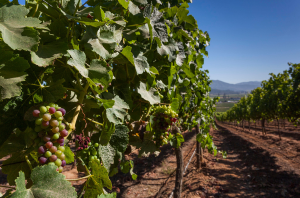Chile is one of the most important wine-producing countries in South America. It occupies a narrow strip of land along the continent’s western coast and is home to a diverse range of terroirs and wine styles. Chile’s viticultural industry is often associated with consistent, good-value wines in export markets, but some world-class reds are also produced commanding high prices.
Chile has been a wine-producing country since the mid-16th century when the first European settlers arrived. The original vines for making sacramental wine were brought directly from Spain or via Peru or California by Catholic missionaries.
It wasn’t until the 19th century that viticulture began to spread in Chile, owing primarily to the spread of wealth associated with mining in the Atacama Desert. European trends began to permeate Santiago, and a wine industry grew to the south of the city, in the Maipo Valley.
Throughout the twentieth century, Chilean wine was limited to a domestic market, but a quality push in the latter half of the century saw an increase in international demand.
Popular Wine Regions and Grape Varieties in Chile
Chile, like many other New World countries, has a signature grape variety, and they have strongly grown and become the most important wine-producing area in South America, especially in Central Valley and Casablanca Valley.
Maipo Valley

The Maipo Valley is a major wine-producing region in Chile. Maipo Valley, located just south of Santiago, is home to some of Chile’s most prestigious wines. It is frequently referred to as the “Bordeaux of South America,” and its most celebrated wine style is rich, fruit-driven Cabernet Sauvignon. The Maipo Valley is Chile’s viticultural heartland. The first vines were planted around Santiago in the 1540s, but it wasn’t until the 1800s that viticulture expanded significantly.
The region is divided into three sections: Alto Maipo, Central Maipo, and Maipo Bajo. The most common grape variety is still Cabernet Sauvignon, but there are also significant plantings of Carmenère vines, as the warmer climate is well suited to this iconic Chilean grape variety.
Because the annual rainfall in Maipo is very low and the climate is both warm and dry, the arrival of technological advances in the 1980s brought consistency to winemaking here. Drip irrigation provides viticulturists with a tool to combat prolonged dry spells, while stainless-steel tanks and oak barrels allow for controlled fermentation and quality aging.
Along with Cabernet Sauvignon and Carmenère, the Maipo Valley is home to a diverse range of grape varieties such as Merlot, Syrah, Chardonnay, and Sauvignon Blanc.
Maule Valley
 Other than the Central Valley, which it is a part of, the Maule Valley is Chile’s largest wine-producing region. It has 75,000 acres of vines (30,000ha) and has traditionally been associated with quantity rather than quality. However, the bulk-producing Pais vine is gradually being replaced by more international varieties such as Cabernet Sauvignon and Carmenère, and careful winemaking practices are being used to produce some world-class red wines from old-vine Carignan. Maule is further south than the star regions of the Central Valley, Maipo and Colchagua.
Other than the Central Valley, which it is a part of, the Maule Valley is Chile’s largest wine-producing region. It has 75,000 acres of vines (30,000ha) and has traditionally been associated with quantity rather than quality. However, the bulk-producing Pais vine is gradually being replaced by more international varieties such as Cabernet Sauvignon and Carmenère, and careful winemaking practices are being used to produce some world-class red wines from old-vine Carignan. Maule is further south than the star regions of the Central Valley, Maipo and Colchagua.
The Maule Valley wine industry has benefited from viticultural know-how and Chile’s push toward quality winemaking, though the region is unlikely to rival the prestige of Maipo and Colchagua anytime soon.
Casablanca Valley

Casablanca Valley is a Chilean wine-growing region located 100 kilometers (60 miles) northwest of Santiago. The east-west valley stretches for about 30 kilometers (20 miles) to the eastern border of the Valparaiso province.
It is best known for its crisp white wines, particularly those made from the Sauvignon Blanc and Chardonnay grape varieties, which have earned its recognition as a quality wine region in Chile. Pinot Noir, which thrives in the cooler climates of this coastal region, is also grown with some success.
By Chilean standards, the region is still in its infancy. The first vineyards in Casablanca Valley were planted in the 1980s, during the revitalization of Chile’s wine industry.
The region is now growing a diverse range of white grapes, particularly aromatics like Viognier, Gewurztraminer, and Riesling, and is central to Chile’s efforts to demonstrate that it can excel at more than just red wines.



